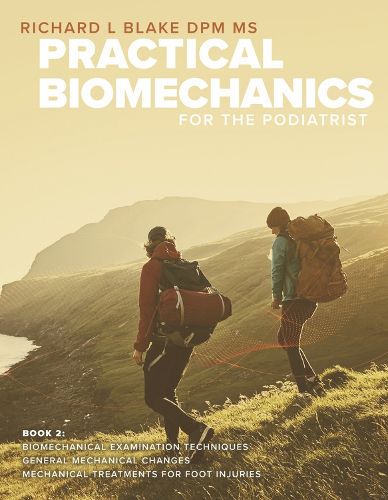Practical Biomechanics for the Podiatrist
Richard L Blake DPM MS

Practical Biomechanics for the Podiatrist
Richard L Blake DPM MS
Practical Biomechanics for the Podiatrist covers the mechanics of each foot and lower extremity injuries and pain syndromes. Book 2, just released in 2022, completely reviews the biomechanical examination with both illustration and description (whose discussion was started in Book 1). The practitioner is encouraged to practice each technique outlined, one at a time, until the technique is reproducible in their hands. In that way, the short and long term changes can be appreciated in your patients. These common 21 techniques, and sometimes just observations, can really focus the doctor/therapist on the patient's biomechanics especially where their variations can cause injury. Forefoot and First Ray Abnormalities are reviewed. Midfoot rigidity or hyper-flexibility are discussed. Subtalar joint, ankle joint, and other lower extremity deviations from normal are discussed. The second chapter of Book 2 begins a thorough discussion of the mechanical treatments utilized for patient care. The focus here is simply to outline what types of treatments are available, but also to begin the discussion of why we do certain things at various times for injury rehabilitation or maintenance of chronic conditions. These general topics are: function of the standard functional foot orthotic device, general use of immobilizing braces and boots, general use of shoes, general use of OTC supplies, general use of taping, general use of padding, role of strengthening and flexibility, pronation control, supination control, correction of leg length, and correction of poor shock absorption. The last chapter of Book 2 is a discussion of mechanical treatments commonly utilized for foot problems. 19 specific problems from First Metatarsal Phalangeal Joint pain, Morton's Neuromas, Tarsal Tunnel, Plantar Fasciitis, Posterior Tibial Tendon pain, Metatarsal Stress Fractures, Lisfranc's Injury, to name a few are discussed in general, in relationship to their biomechanics, and in relationship to the various treatments available. The goal is to give many treatment options, and many/most are done by the patient, to help all patients recover from their injury completely, and prevent the injury from re-occurring. And, for many injuries, they may be started after a foot surgery is performed, or in an attempt to avoid surgery when applicable.
This item is not currently in-stock. It can be ordered online and is expected to ship in approx 3 weeks
Our stock data is updated periodically, and availability may change throughout the day for in-demand items. Please call the relevant shop for the most current stock information. Prices are subject to change without notice.
Sign in or become a Readings Member to add this title to a wishlist.


